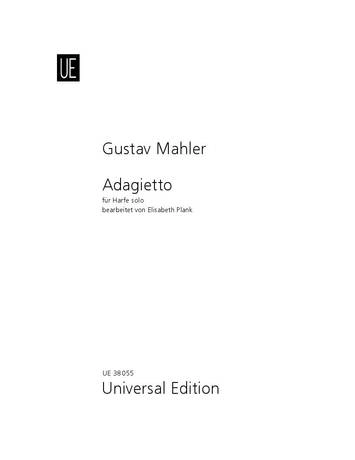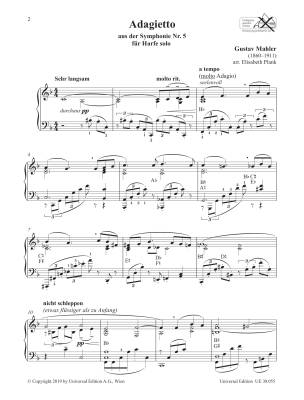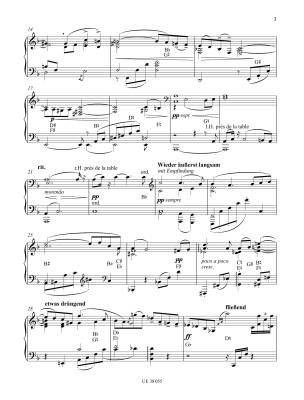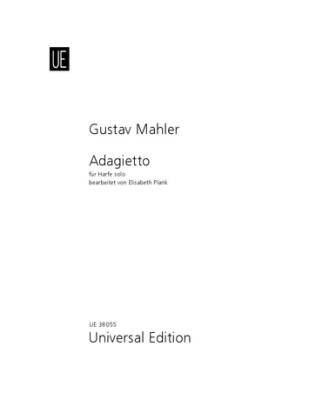Opens in a new window
Universal Edition Adagietto from Symphony #5 - Mahler/Plank - Solo Harp - Book

Additional Photos:


Product Videos :
YouTube Video


- Composer/Author: MAHLER, GUSTAV
- Instrumentation: HARP
- Model # UE38055
Arranger: Elisabeth Plank
Format: Book
Instrumentation: Solo Harp
Gustav Mahler's "Symphony No. 5" is considered one of the most popular and most frequently performed works by the Austrian composer. Composed in 1901/1902 and orchestrated two years later, it kept Mahler busy until his death. The eleven-minute fourth movement of the five-movement work is a fascinating haven of peace in the seventy-minute symphony, not only because of its compositional arrangement as an Adagietto, but also because of its instrumentation with no wind instruments or percussion.
As the original was studded with strings and harp, Elisabeth Plank edited the movement for harp solo, capturing the floating, almost fragile character of the work. The slow basic tempo offers a wide field for agogic interpretation, which together with the dynamic development transforms melody and metrics into gentle wave-like gusts. With the reduction to the harp, which now comes to the fore as a solo instrument in the arrangement without the strings, the advanced degree of difficulty and self-contained self-conception interprets the flowing rapture and peaceful intimacy of the movement, which also fascinated Luchino Visconti in his film adaptation of Death in Venice (1971).
Media
Youtube video product demo
Q & A
There are currently no questions for this product.
Reviews
There are currently no reviews for this product. Be the first to write one!





